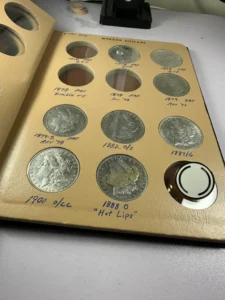You’ve created a masterpiece – a dreamy pattern, a quirky illustration, or a culturally-inspired graphic that catches eyes like it’s wearing glitter. And boom, a brand slides into your inbox like: “Hey bestie, we wanna license your art.”
Awesome, right? But then comes the real question:
“Would you prefer a flat fee or a royalty-based agreement?”
Cue the confusion.
If you’re a creative new to the licensing game, this feels like a pop quiz with money on the line. Don’t stress. In this guide, we’re breaking down flat fees vs. royalties like your creative career depends on it — because it kinda does.
Whether you’re selling your art for stickers or global fashion collabs, understanding how you’re paid is the power move. Let’s make sure you choose wisely.
What Is Art Licensing Anyway?
In simple terms, Art licensing means you (the artist) give someone (a brand or company) permission to use your art on their products, while still owning it.
Instead of selling your original work outright (aka a total goodbye), you keep ownership and get paid for use over time.
Think: notebooks, calendars, wallpaper, mugs, t-shirts, or even packaging.
The brand gets the rights to use it. You keep the copyright. Periodt.
Now comes the big money question: How will they pay you? That’s where flat fee and royalties enter the chat.
What Is a Flat Fee in Art Licensing?
A flat fee is a fixed, one-time payment. You get paid upfront for the right to use your artwork within a specific scope (like on 2026 planners sold in the US for one year).
Example:
A home decor brand pays you $1,000 to license your artwork for a set of throw pillows. That’s it. No more money, even if they sell 10 or 10,000 pillows.
Pros of Flat Fees:
Instant cash — You get paid upfront
Simplicity — Easy to negotiate and track
Low risk — You get paid even if the product flops
Cons:
No bonus if it goes viral — You don’t get more even if it sells like hotcakes
Hard to price — You could undervalue yourself if you’re new
No long-term revenue — It’s a one-and-done deal
TL;DR: Flat fees are like a cute first date. Good vibes, immediate benefit, but it might not lead to a long-term relationship.
What Are Royalties in Art Licensing?
Royalties are recurring payments you earn based on the sales of products using your licensed art. You get paid a percentage every time something sells.
Example:
You agree to license a pattern for 5% royalties on every backpack sold. If the company sells $50,000 worth of backpacks, you make $2,500.
Pros of Royalties:
Passive income — Keep earning as products sell
No earning ceiling — If it explodes, you benefit big time
Motivates partnership — The brand has skin in the game to promote it
Cons:
Sales uncertainty — If the product doesn’t sell, you might earn $0
Delayed payments — Typically paid quarterly or biannually
Tracking complexity — You’ll need reports, statements, and sometimes audits
TL;DR: Royalties are the situation of licensing. There’s potential for magic, but it depends on effort and consistency.
Flat Fee vs. Royalties: The Side-by-Side Comparison
| Criteria | Flat Fee | Royalties |
|---|---|---|
| Payment Timing | Upfront | After-sales, ongoing |
| Risk Level | Low | Medium to high |
| Income Potential | Capped | Unlimited (theoretically) |
| Admin Complexity | Low | Higher (contracts, tracking) |
| Ideal For | One-off or low-scale projects | High-volume or evergreen sales |
When to Choose a Flat Fee
You’re just starting and need guaranteed cash flow
The product has a limited shelf life (e.g., holiday-themed merch)
The brand is small or local, so a large sales volume isn’t likely
You want simple accounting and no follow-up hassle
When to Choose Royalties
You trust the brand to market the product well
You believe the design has mass appeal or long-term value
You’re building a licensing portfolio and want recurring income
You’re okay with waiting for the payout to grow
Is There a Middle Ground? Yup: Hybrid Deals
Many experienced artists (especially in print-on-demand or surface design) negotiate a hybrid model:
“$300 flat fee upfront + 5% royalties after 1,000 units sold.”
This way, you get:
Security + upside
More negotiating leverage
A solid relationship with the brand
It’s like a bestie situation with financial benefits.
Tips for Negotiating Flat Fees and Royalties
Know your value: Research what others in your niche are charging
Understand licensing scope: Define exactly what the art can be used on, for how long, and where
Ask about sales projections: Request estimated units and reporting structure
Always read the fine print: Use a contract. Always
Don’t be afraid to walk away: A bad deal is worse than no deal
Common Mistakes to Avoid
Agreeing to unlimited usage rights for a flat fee
Assuming royalties will automatically make you rich
Not setting royalty payment schedules or audit clauses
Ignoring minimum guarantees in royalty deals
Final Thoughts: Your Art, Your Rules
Choosing between a flat fee and royalties comes down to your goals, your project, and your gut.
Flat fees are great when you need stability and speed.
Royalties are awesome if you’re in it for the long haul and believe in your art’s money-making magic.
Pro tip: Don’t be afraid to ask questions, negotiate, and walk away from shady deals.
Whether you’re licensing a single design or building a passive income empire, the way you get paid matters. Choose the model that makes your artwork for you.






